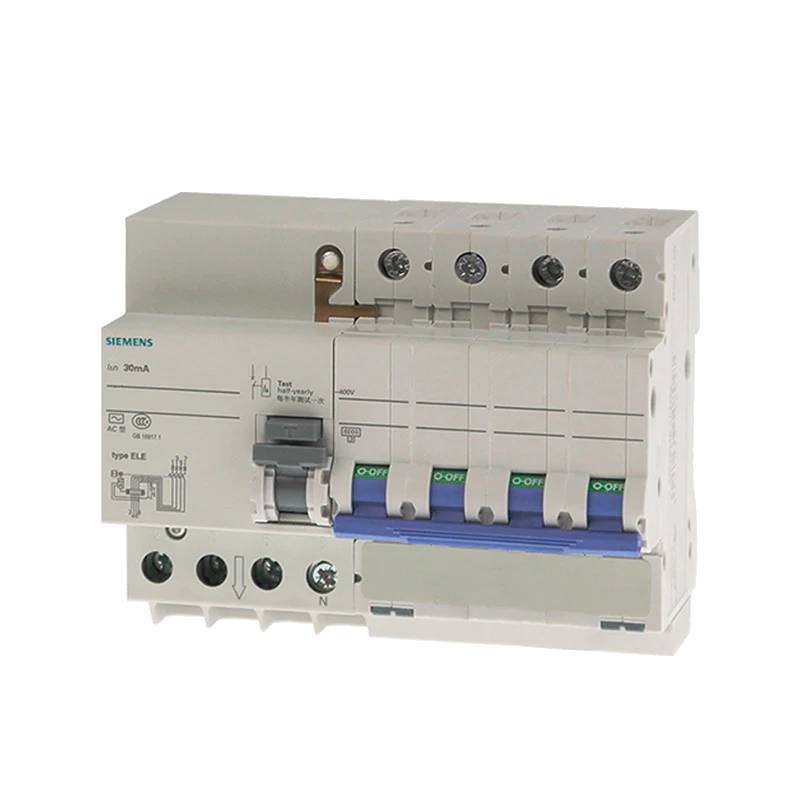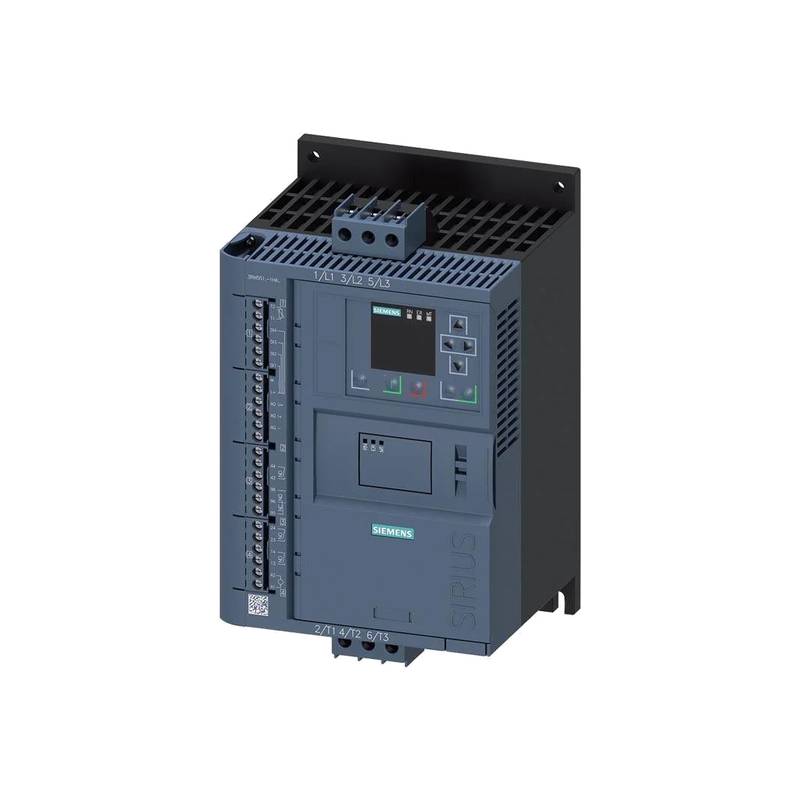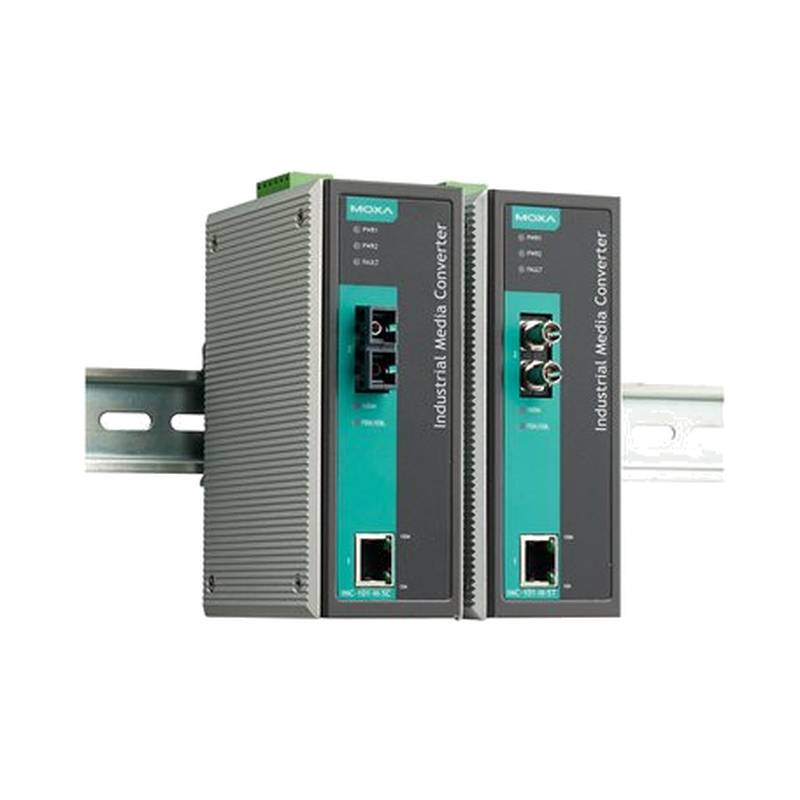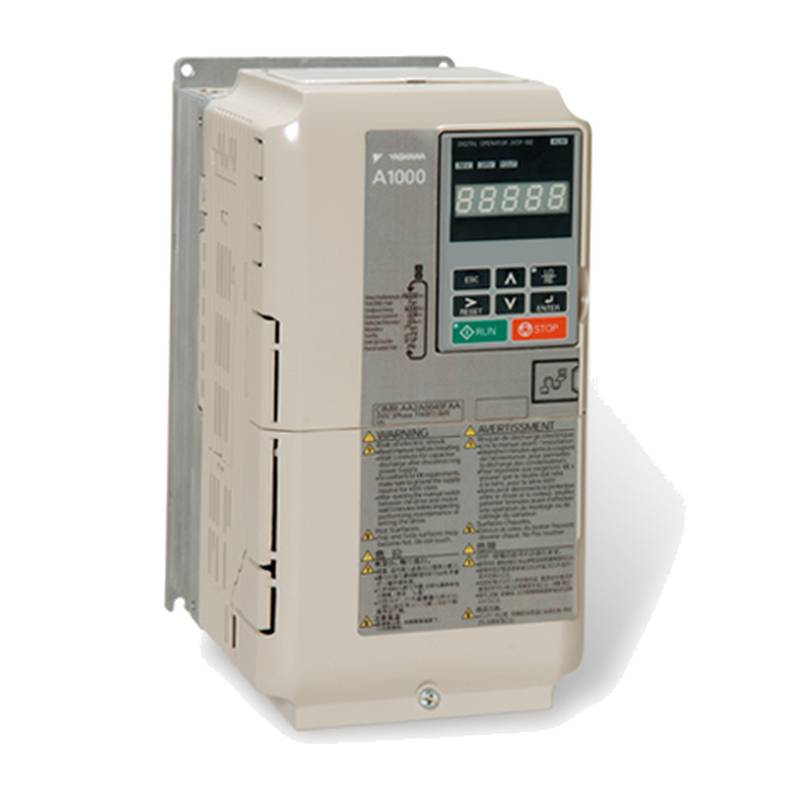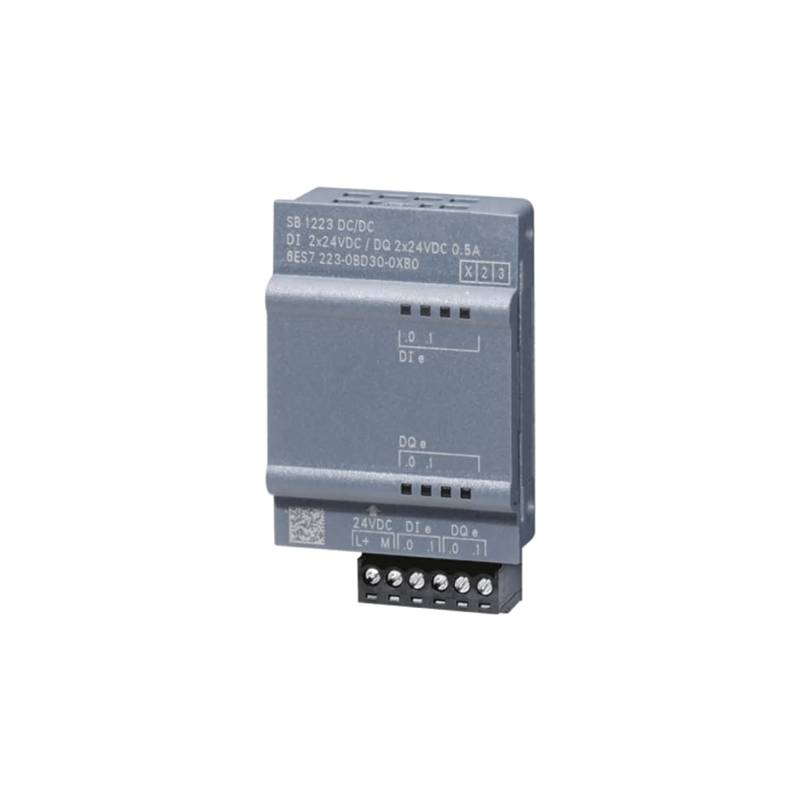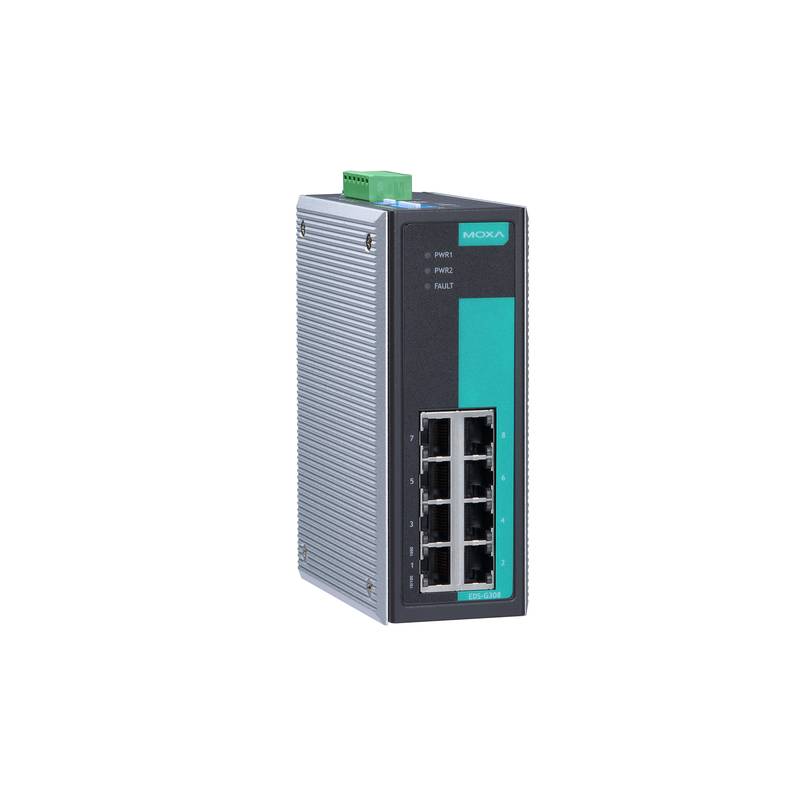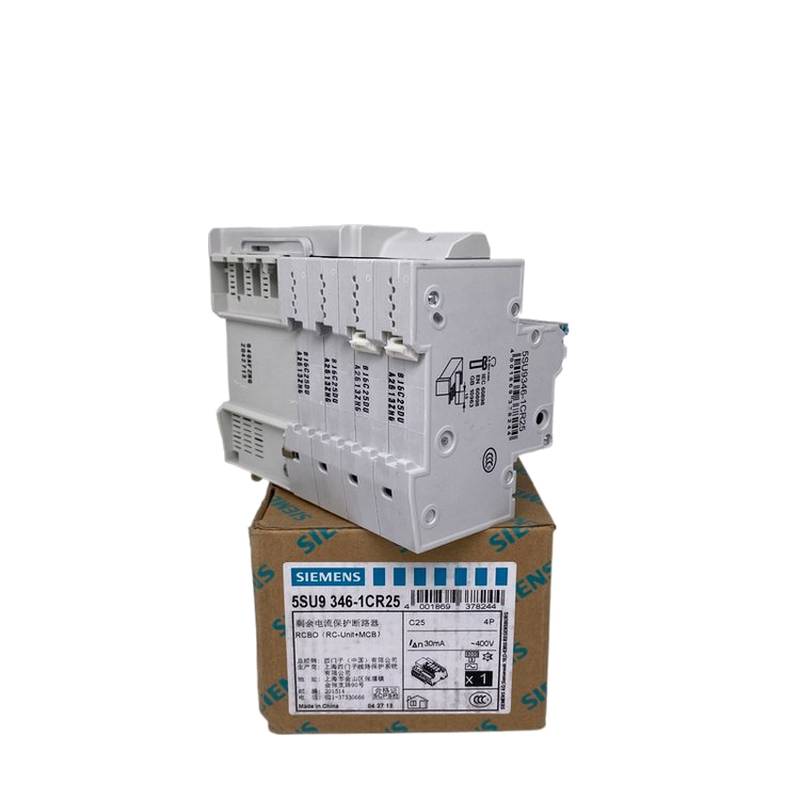
The Siemens 5SU9336-1CN20 is a compact Residual Current Circuit Breaker with Overcurrent protection (RCBO) designed for robust electrical safety and reliable circuit management in demanding industrial environments. This 20A, 30mA, 3-pole device offers a streamlined solution for protecting personnel and equipment against overload, short-circuit, and earth leakage faults. Its integrated design simplifies installation and reduces panel space, a critical advantage in modern electrical installations. With a breaking capacity of 6kA, it ensures swift and effective disconnection under fault conditions, safeguarding sensitive machinery and preventing potential hazards. The C-curve tripping characteristic is ideally suited for inductive loads commonly found in industrial settings, providing ample surge current tolerance without nuisance tripping.
Siemens 5SU9336-1CN20: Product Specifications
| Specification | Value |
| :--------------------------- | :------------------------ |
| Product Type | Compact RCBO |
| Rated Current (In) | 20 A |
| Residual Current Rating (IΔn)| 30 mA |
| Number of Poles | 3 |
| Tripping Characteristic | C |
| Breaking Capacity (Icn) | 6 kA |
| Voltage Rating (Un) | 400 V AC |
| Frequency | 50/60 Hz |
| Mounting Type | DIN Rail |
| Terminal Type | Screw Terminal |
| Protection Class | IP20 |
| Operating Temperature | -25°C to +45°C |
Core Features & Market Positioning
The Siemens 5SU9336-1CN20 distinguishes itself through its highly integrated design, combining the functions of a miniature circuit breaker (MCB) and a residual current device (RCD) into a single, compact unit. This integration minimizes wiring complexity and saves valuable panel space, directly addressing a key pain point for electrical panel builders and system integrators. Its robust construction and adherence to stringent international safety standards (e.g., IEC/EN 61009-1) position it as a reliable choice for applications where uninterrupted operation and personnel safety are paramount. The 6kA breaking capacity offers a solid level of protection against severe fault currents, differentiating it from lower-rated devices. Siemens' reputation for quality and innovation further solidifies the 5SU9336-1CN20's market standing as a dependable and technologically advanced solution for critical power distribution.
Key Application Scenarios
This Siemens RCBO is exceptionally well-suited for protecting circuits in industrial facilities, manufacturing plants, and commercial buildings where a combination of overcurrent and earth leakage protection is mandated or desired. Common applications include the safeguarding of motor control circuits, lighting systems, and general power distribution networks. Its 3-pole configuration makes it ideal for three-phase systems, commonly found in heavy machinery and industrial equipment. The 30mA residual current sensitivity is critical for ensuring protection against electric shock for personnel, particularly in areas with a higher risk of earth faults. The C-curve characteristic makes it a strong candidate for circuits feeding inductive loads, such as pumps, fans, and conveyor systems, where brief inrush currents can occur during startup.
Practical System Integration Guidance
Integrating the Siemens 5SU9336-1CN20 is a straightforward process for qualified electricians. It mounts directly onto a standard 35mm DIN rail, simplifying physical installation within electrical enclosures. For wiring, the line and neutral conductors for each phase are connected to the designated input terminals, typically at the top, while the output terminals, usually at the bottom, feed the protected circuit. It is crucial to ensure that all connections are securely tightened to prevent overheating and ensure optimal conductivity. When installing in a three-phase system, correct phase rotation and grounding are essential. For applications requiring remote signaling of trip events or integration into a larger control system, auxiliary contacts (sold separately) can be fitted to the side of the RCBO, providing status feedback to PLCs or alarm systems. Always consult the product's detailed manual for specific wiring diagrams and safety precautions.
Operation and Risk Mitigation
The Siemens 5SU9336-1CN20 operates by continuously monitoring the current balance between the live and neutral conductors. If an imbalance exceeding 30mA occurs, indicating a potential earth leakage fault, the integrated RCD function trips the circuit rapidly. Simultaneously, the MCB function provides overcurrent protection, tripping the circuit if the current exceeds the 20A rating due to overload or short-circuit conditions. To mitigate risks, regular testing of the RCD function is recommended using the built-in test button. This ensures the device remains operational and will trip correctly in the event of a fault. In case of tripping, identifying the root cause—whether it's a genuine earth fault, a temporary surge, or an overload—is critical before resetting the device. Avoid repeatedly resetting the RCBO without investigating the cause, as this could exacerbate damage or pose a safety risk.
Scalability & Long-Term Value
The Siemens 5SU9336-1CN20 offers significant long-term value through its compatibility with Siemens' extensive range of modular DIN-rail mounted components, including busbars, distribution blocks, and other protective devices. This ensures seamless integration into existing or future electrical panel designs, allowing for easy expansion and modification of power distribution systems. While this specific model is a self-contained unit, its ability to function within a broader Siemens ecosystem means that future upgrades or the addition of more sophisticated monitoring and control functionalities can be achieved without replacing the core protective infrastructure. Its robust design also contributes to a long operational lifespan, reducing the need for premature replacement and contributing to the overall cost-effectiveness of electrical installations.
FAQs
Q1: What is the primary function of the Siemens 5SU9336-1CN20?
A1: It provides combined overcurrent and earth leakage protection.
A2: It protects circuits from overload, short circuits, and electrical shocks.
A3: This device acts as a crucial safety component in electrical installations.
Q2: What does "20A 30mA 3P C" mean for this RCBO?
A1: "20A" is the rated current, protecting against overloads.
A2: "30mA" is the residual current sensitivity for shock protection.
A3: "3P" denotes three poles for three-phase systems, and "C" is the tripping curve.
Q3: Can this RCBO be used in single-phase applications?
A1: No, it is designed for three-phase (3-pole) systems.
A2: Using it in single-phase would leave two phases unprotected.
A3: For single-phase, a 2-pole RCBO would be the correct choice.
Q4: How do I test the residual current function of the 5SU9336-1CN20?
A1: Press the integrated "T" or test button on the device.
A2: This simulates a fault current to check the tripping mechanism.
A3: Perform regular tests to ensure continued safety compliance.
Q5: What type of loads is the C-curve characteristic suitable for?
A1: It's ideal for circuits with moderate inrush currents.
A2: Common applications include motors, transformers, and lighting.
A3: The C-curve tolerates surges without nuisance tripping.
Q6: What is the breaking capacity of this RCBO?
A1: The breaking capacity is 6 kA.
A2: This indicates its ability to safely interrupt fault currents.
A3: It's suitable for circuits where fault levels do not exceed 6000 Amperes.
Q7: How is the Siemens 5SU9336-1CN20 installed?
A1: It mounts directly onto a standard 35mm DIN rail.
A2: Secure wiring connections are essential for performance.
A3: Integration into electrical panels is straightforward.
Q8: What is the difference between an RCBO and an RCD or MCB?
A1: An RCBO combines both RCD and MCB functions in one unit.
A2: An RCD only protects against earth leakage faults.
A3: An MCB protects only against overcurrents (overload/short circuit).
Q9: Can this RCBO be used in residential or domestic applications?
A1: While it offers superior protection, it's primarily for industrial use.
A2: Residential applications typically use 2-pole RCBOs or separate RCDs/MCBs.
A3: Its 3-pole design is specific to industrial three-phase power.
Q10: Does this RCBO offer remote fault signaling?
A1: The base unit does not include remote signaling.
A2: Auxiliary contacts can be purchased and attached for this function.
A3: These contacts provide status output to control systems.














